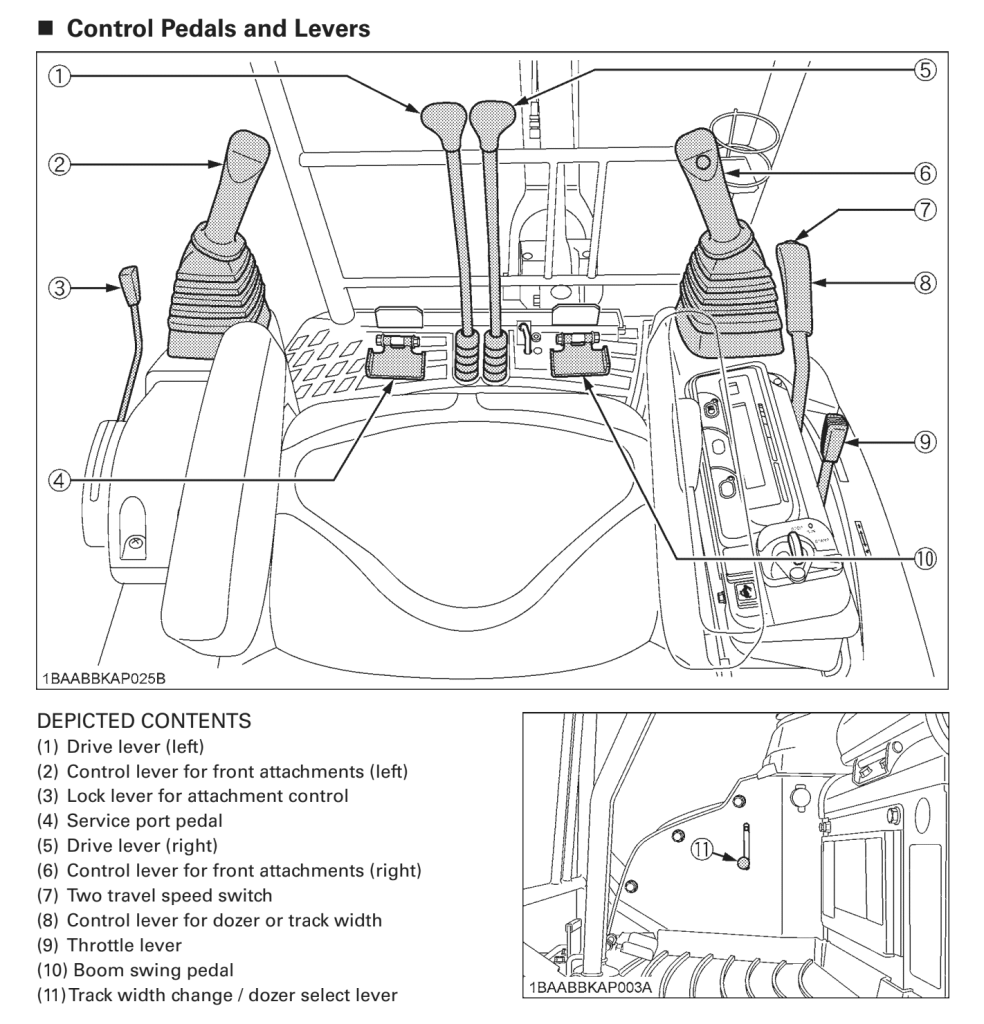excavator controls diagram
The controls of an excavator are essential for operating the machine effectively and safely. Understanding the various controls and their functions is crucial for operators to maneuver the excavator efficiently during construction and excavation tasks. Here is an overview of an excavator controls diagram and an explanation of the functions of each control:

Excavator Controls and Functions:
Joysticks:
Function: Joysticks are used to control the movement of the boom, arm, and bucket. Pushing the joysticks in different directions allows the operator to extend, retract, raise, and lower these components.
Foot Pedals:
Function: Foot pedals control the excavator’s tracks or wheels, enabling forward and backward movement as well as steering. Operators use the foot pedals to maneuver the machine on the job site.
Control Pattern Change Switch:

Function: This switch allows operators to change the control pattern of the joysticks from excavator control (ISO) to backhoe control (SAE) or vice versa, depending on their preference or operational needs.
Throttle Lever:
Function: The throttle lever controls the engine speed of the excavator. Operators can adjust the throttle to increase or decrease the engine RPM for efficient performance during various tasks.
Monitor Display:
Function: The monitor display provides real-time information about the excavator’s performance, including engine status, hydraulic pressure, fuel level, temperature, and error messages. It helps operators monitor the machine’s condition and make informed decisions.
Auxiliary Control Switches:
Function: Auxiliary control switches operate additional hydraulic functions such as attachments (e.g., hydraulic hammer, grapple, or auger). They allow operators to control these attachments for specialized tasks.
Backup Camera Display:
Function: Some modern excavators are equipped with a backup camera display to assist operators in reversing and maneuvering the machine safely. The camera provides a clear view of the machine’s surroundings to prevent accidents.
Importance of Familiarizing with Excavator Controls:
Operators must undergo training to familiarize themselves with the excavator controls and practice using them effectively. Understanding the functions of each control and how they interact with the excavator’s components is crucial for safe and efficient operation on construction sites. Regular practice and adherence to safety protocols ensure that operators can maximize the excavator’s capabilities while minimizing risks and accidents.
By mastering the excavator controls and their functions, operators can improve productivity, accuracy, and safety during excavation and construction projects. Proper training and experience play a vital role in operating excavators proficiently and achieving optimal results in various work environments.